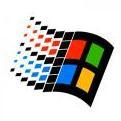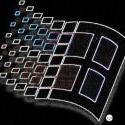Leaderboard
Popular Content
Showing content with the highest reputation on 03/29/2021 in all areas
-
While I did find that post of yours to be of value/merit , soliciting "likes/upvotes" in such a blatant way is not something to my liking... But that's just probably me getting older...4 points
-
So i contacted with PotPlayer developers with question about end of win XP support and get answer. Here it is (spelling and punctuation preserved): So, as i understand, version from January 27, 2021 is last with win XP support. https://cafe.daum.net/pot-tool/BHPW Also i contacted with developers of another program that recently stop working with Win XP. It is D3Dgear - Game Recording Software. https://www.d3dgear.com/ And in conversation it turns out that developers apparently, while updated they program, did not notice that they drop support with win XP. So now, they were aware of that and fixed win XP support! @Sampei.Nihira, or somebody else, please can you download free 15-day trial version of that program and check does it work with your win XP. It finally installs on my system with last version, but since it is 15-day trial version it does not launch on my system - i probably 4 or 5 years ago already try it in trial version.2 points
-
That was a recent problem I came upon as well. After some testing with a fresh profile there's a new file called "shield-preference-experiments.json" that has to be there to get all of about:support (at least with v88.0, haven't tested with v87.0). If the current profile isn't automatically generating it then try creating a new profile and then copying that file into the profile where it it isn't.2 points
-
Go and download a tool called "WindowsPatchLoader" as well as "Dism++". Open the Zip folder from Patch Loader and launch the WindowsPatchLoader 2.0 Application. Now select your Operating System, as well as the architecture (Vista, x64) and a whole bunch of updates will be shown (from 2008-2021). Uncheck the first 50 I guess, since they include SP1 and SP2, which are already installed on your machine. I would recommend you to only download 2010-2018 Updates and if you really want extra security, go till 01/2020. After they finished downloading, launch Dism++ and go to Updates Management. Here you press "Add" and now select all the previous downloaded updates. Dism++ will apply all of the selected updates to your PC now. After that, go restart your PC and voilà.. your Vista system is patched and ready for Extended Kernel. ATTENTION!: 1. In order to download the applications, first be sure you use Firefox 52.9 ESR, as IE9 may not be able to open the websites 2. Speaking of IE9, please be sure that you have installed it on your system, since some updates may be IE9-patches, which include TLS1.1/1.2 support + additional security (ONLY IF YOU ARE USING IE9!) 3. I would always recommend you to only install like 100 Updates at once to avoid any errors during Reboot!2 points
-
Soon Windows 10 1909 will be out of support by Microsoft and a version of Aero Glass for the 2004 and 20H2 versions has not yet come out and even Windows 10 21H1 will soon be out. The truth is I miss the Aero theme of Windows 7 and this is the only program that works.1 point
-
@Dave-H Well, Vista is mentioned parenthetically in the thread title, so it oughtn't be completely off topic, yes? That being said, a separate, Vista-specific thread would be much more appropriate, as too much of it here tends to distract from all the XP-specific information, thereby causing confusion. c1 point
-
It's a very small file, only 18 bytes. Kind of strange they linked that with about:support in the profile but nothing they do surprises me anymore.1 point
-
@Rod Steel I extracted the installer, launched d3dGear directly and got it to display the splash screen, but then got error about missing install date in registry. I had v.4.31 expired trial from some years ago, so no point in trying to install this one here. If you happen to have Cameyo packager, you could try making a package in a VM and running that on your system. If the packager captures the install timestamp, you should be able to run it for 15 days.1 point
-
1 point
-
Thanks for your insights Gansangriff. The search engine is nifty, definitely provides some old school hits and information, very nice. For anyone who wants to test drive: https://wiby.me/ Thanks also for the Wikipedia image link, shows off all that channel stuff nicely. Windows 95 was installed briefly here many years ago but i don't recall the channel bar, must not have been memorable. Seems there are always going to be users who don't want to 'upgrade' (bloat, extra effort, don't fix what ain't broke, run old hardware/software, increased telemetry, less tweakable). This is also evident in non-Windows environments where software tends to get dumbed-down, more bloated and less configurable. Agree Microsoft loaded install CDs as much as possible, already apparent in Windows 95. I reviewed my Windows 95 install CD in some detail a while back. https://msfn.org/board/topic/177106-running-vanilla-windows-98-in-2020-and-beyond/page/31/?tab=comments#comment-1186323 Unrelated to computing but in the spirit of keeping electronics alive, wanted to share. Buttons on cordless phones, calculators and remote controls often fail to work properly after a period of time. It can usually be fixed by taking the item apart (pry plastic if no screws) and using Isopropyl alcohol to clean both the circuit board and underside of the 'silicone' (whatever it is) button contacts. If the black conductive material on the silicone pad is too worn then conductive paint can be applied. I'm too cheap and just apply aluminum foil with double-sided tape to the underside of the silicone pad buttons. Depending on the size required a hole punch gets a nice round button contact. There are lots of alternative materials available, such as copper tape or a conductive pen. Whatever you have around the house is usually easiest. The fix lasts quite a while before repeating. Almost all of my 20+ year old calculators and remote controls have required some of this maintenance and continue to perform well.1 point
-
Actually, it's Power DVD we were talking about , but I totally understand it is easy to mix them up and the activation process is quite hard , if not unbearable with both. I've read that newer versions need to be activated for each codec , for example , to play x265/H265 (HEVC) with version 16 you need to activate it separately with a given number. Just ridiculous , I won't support them , that's for sure , but I see the customers are OK with this , like most of folks are OK with everything that's going on. In any case, I really appreciate your help, thanks and like from me.1 point
-
Just tried it in a Windows 7 VM snapshot with the 32bit NL version, and about:support looks complete here. [Edit] That was the official installer. Will try with the portable one. Wait a moment. [Edit2] Looks normal again.1 point
-
It got corrupted because of the numerous updates ! I use Vista from 2007 and never had any problems . If you need the ex-kernel , the only update that must be installed is KB4467700-x64. If you play DX 11 games - you need to install KB2117917 and KB971512. That's it ! You can also install VC redist and Frameowrk 4.5 . You do not need anything else, if you don't click suspicious links.1 point
-
Windows XP doesn't have DWM, so screen tearing outside apps that request it for themselves is normal. I don't remember VSync ever being a thing for Direct3D windowed mode, but it can work for windowed OpenGL. Your other problems are not the norm.1 point
-
Well you can either use a proxy mod to get Windows Update working again or use @greenhillmaniac's Vista Update Repository and for 2008 updates this1 point
-
Some applications started demanding the SHA-2 rollup update KB4474419, which is obviously already installed, so that will become the minimum soon. Though there are currently two sets of ntoskrnl/winload; one works with April 2017 updates (soon to be discontinued), and the other only works with the (SHA-2) March 2019 update. They will not work with anything else.1 point
-
New build of BOC/UXP for XP! Test binary: MailNews Win32 https://o.rthost.win/boc-uxp/mailnews.win32-20210327-355db4de-uxp-698b235b2-xpmod.7z BNavigator Win32 https://o.rthost.win/boc-uxp/bnavigator.win32-20210327-355db4de-uxp-698b235b2-xpmod.7z source repo (excluding UXP): https://github.com/roytam1/boc-uxp/tree/custom-older * Notice: the profile prefix (i.e. parent folder names) are also changed since 2020-08-15 build, you may rename their names before using new binaries when updating from builds before 2020-08-15. -- New build of HBL-UXP for XP! Test binary: IceDove-UXP(mail) https://o.rthost.win/hbl-uxp/icedove.win32-20210327-id-f0915f3-uxp-698b235b2-xpmod.7z IceApe-UXP(suite) https://o.rthost.win/hbl-uxp/iceape.win32-20210327-id-f0915f3-ia-c642e3c-uxp-698b235b2-xpmod.7z source repo (excluding UXP): https://github.com/roytam1/icedove-uxp/tree/winbuild https://github.com/roytam1/iceape-uxp/tree/winbuild for UXP changes please see above.1 point
-
New build of Serpent/UXP for XP! Test binary: Win32 https://o.rthost.win/basilisk/basilisk52-g4.8.win32-git-20210327-cf582a3-uxp-698b235b2-xpmod.7z Win64 https://o.rthost.win/basilisk/basilisk52-g4.8.win64-git-20210327-cf582a3-uxp-698b235b2-xpmod.7z source code that is comparable to my current working tree is available here: https://github.com/roytam1/UXP/commits/custom IA32 Win32 https://o.rthost.win/basilisk/basilisk52-g4.8.win32-git-20210327-cf582a3-uxp-698b235b2-xpmod-ia32.7z source code that is comparable to my current working tree is available here: https://github.com/roytam1/UXP/commits/ia32 NM28XP build: Win32 https://o.rthost.win/palemoon/palemoon-28.10.3a1.win32-git-20210327-14cf41740-uxp-698b235b2-xpmod.7z Win32 SSE https://o.rthost.win/palemoon/palemoon-28.10.3a1.win32-git-20210327-14cf41740-uxp-698b235b2-xpmod-sse.7z Win64 https://o.rthost.win/palemoon/palemoon-28.10.3a1.win64-git-20210327-14cf41740-uxp-698b235b2-xpmod.7z Official UXP changes since my last build: - Issue #1749 - Remove restriction of SVG width/height element attributes. (a94a86ff7) - Issue #1053 - Remove __ANDROID__ defines (except in third party code) (b59777a67) - Issue #1751 - Remove MacOS support from configure (d3543ca2f) - Issue #1752 - Implement "prefers-color-scheme" as a user preference. (e946ca91f) - Merge pull request 'Implement "prefers-color-scheme" as a user preference.' (#1753) from athenian200/UXP:prefers-color-scheme into master (c1b064b99) - [docshell] Stop loading of the document if network load is stopped. (021fecded) - [WebGL] Only allow texture uploads from pixelbuffer if bound. (75dbd532f) - [WebRTC] Apply port restrictions to peerconnections. (698b235b2) Official Basilisk changes since my last build: - Back-end branch pointer update. (e056a30) - [search] Don't try to force x-icon image type for search engine icon. (cf582a3) Official Pale-Moon changes since my last build: - Remove stray Android conditional (d49542b18) - Merge branch 'master' of https://repo.palemoon.org/MoonchildProductions/Pale-Moon (53652a07c) - Back-end branch pointer update. (1fa8971d5) - Issue #1865 - Remove XP_MACOSX conditional blocks. (14cf41740)1 point
-
1 point
-
No problems here. I apply the Security Only Quality Updates and Cumulative Security Updates for Internet Explorer 9. http://www.catalog.update.microsoft.com/Search.aspx?q=2021-03+server+2008 For Vista x64 you have to apply a workaround to install the Internet Explorer updates: - start cmd as administrator - change location to the folder that contain msu file, example cd /d C:\updates - copy/paste and execute these commands (preferably one by one) mkdir .\tmp expand.exe -f:*Windows*.cab *kb5000800-x64*.msu . >nul expand.exe -f:* *kb5000800-x64*.cab .\tmp >nul start /w PkgMgr.exe /ip /m:"%cd%\tmp\package_2_for_kb5000800~31bf3856ad364e35~amd64~~6.0.1.0.mum" /quiet /norestart start /w PkgMgr.exe /ip /m:"%cd%\tmp\package_3_for_kb5000800~31bf3856ad364e35~amd64~~6.0.1.0.mum" /quiet /norestart del /f /q *kb5000800-x64*.cab rd /s /q tmp Restart You can do this with each new IE9 update, just make sure to specify the correct KB number and name for package_2_/package_3_1 point
-
To install an older Windows operating system on a computer running Windows Vista, use the following procedure. Install the previous version of Windows, e.g. XP or 2000 Log on to the older operating system and restore the latest boot manager by running the following. bootsect.exe -NT60 All bootsect.exe might be in your boot folder of active partition. If not there, then it's on your Vista DVD in boot folder. Create a BCD entry for the older operating system by specifying the following. Bcdedit.exe is located in the \Windows\System32 directory of the Windows Vista partition. Description is the description of the new entry for the older operating system. Bcdedit /create {legacy} /d “Description” Bcdedit /set {legacy} device boot Bcdedit /set {legacy} path \ntldr Bcdedit /displayorder {legacy} /addlast Restart the computer in order for the changes to take effect.1 point
-
This is a good post for a sticky, so I'm going to re-use this thread for educational use and strip out the name of the person asking the question:First, we'll discuss the 4GB RAM limit on x86 systems. The 4GB limit is hardware-based (well, almost - I'll explain the workaround later that allows up to 128GB) - the x86 architecture can really only address memory addresses at 2^32, or 4,294,967,296 (4,294,967,296/1024x1024=4096, or 4GB) at any one time. So, no executable code can be at any address higher than the 4GB "window" that the x86 CPU can see. However, there were 2 workarounds that Intel put in place awhile ago to try and extend the life of the 32bit platform until it could get it's 64bit Itanium platform mainstream, and these were PAE and PSE (read here for more on why Microsoft chose to implement PAE rather than PSE). The specific workaround used in Windows is called Physical Address Extension (PAE), which was added by Intel in the Intel Pentium Pro and Pentium II lines of CPUs (and continued subsequently to this day) to allow data (and data ONLY) to be mapped into RAM above the 4GB memory address range - however, there is a set of limitations on this. The first limitation is that this window to the RAM above 4GB *must* be mapped into a contiguous memory address range in the application's original 2GB (or 3GB, with /3GB) process space, because again the x86 architecture can only address memory up to the 4GB range (so mapping it into this window allows it to be addressed, with the application handling the management overhead). That brings us to the second limitation, specifically that this window must be managed entirely by the app, as I mentioned previously - there is no using the OS's memory manager, as the memory manager does not know how to handle memory above the 4GB boundary in a process' space, thus placing an overhead on the app. The last limitation is that the memory window *must* not contain executable code (again, the CPU's eip register doesn't understand addresses above 0xFFFFFFFF, the address limit of the x86 architecture). PAE is technically a hack, and if you want your applications to *really* use memory above 4GB, you will want to use a CPU architecture that supports it (Intel's Itanium ia64 or the AMD/Intel x86-64, or x64). Note that there are ways to get a 32bit system to use and run applications above the normal 4GB boundary, as Windows Server editions can do this natively when /PAE is enabled. Microsoft has limited this (artificially) on client systems, however, due to potential for client-side driver incompatibility, as well as the fact that x86-based servers with more than 4GB of RAM have been fairly common for awhile, whereas 4GB client systems were fairly rare and probably not as well tested with all of the possible myriad of drivers that can be found on a client system. Addressing that much memory can also increase the size of the PFN entries, doubles the size of each PTE, and otherwise starts to constrain the kernel's normal 2GB of VA. For example, an x86 Windows system with 16GB of RAM is already using ~112MB of VA just for PFN entries, and you take the available PTEs available to the system and reduce them by approximately 7x. While I don't agree (at all) with doing this as it violates the EULA and license you have to run a Windows client OS, as well as cripples the OS kernel in many ways, Geoff Chappell has an article about how the 4GB restriction on client OSes can be bypassed here. If you want to use more than 4GB of RAM with an actual legally licensed copy of Windows client, however, you need an x64 license. The section portion of this sticky is the problem people see when they boot up an x86 system with 4GB of RAM, but Windows only reports the available RAM as somewhere between 3GB and 4GB. Rather than be lengthy about it and rehash old threads, I'll simply point to them to explain why this happens: 1. Start here, here, and here for a technical overview of how this can happen, and 2. Read this, this, this, and this to see real-life examples of this happening, and what can (and cannot) be done to resolve it. Now it's been stickied, so if you ask these types of questions going forward, you will simply be pointed to the contents of this thread. These are not necessarily Windows problems, these designs and limitations are an outcome of the design and architectural limitations of the 32bit architecture - especially the second issue, where the BIOS reserves memory for hot-add/hot-swap memory, PCI-X/PCI-E buses, and (if it applies) your 256MB or 512MB video card reserve memory resources for their usage, causing the discrepancy in reporting of installed memory vs *available* memory to the OS. Last updated 2 August 20101 point
-
You choose where you want XP installed. Choose a drive other than your Vista drive.1 point
-
The connectivity issues had to do with an Oracle database that has at most, about 12 simultaneous clients connecting to it. All of the clients were getting errors from the Oracle client itself, followed by an error in the custom application, that connectivity was interrupted. Being that I am not an Oracle guy, I called one in. Well he couldn't find the issue on his own. He called in a Linux guru since the database was running on Red Hat. Between the two of them, they definitively found that with UPnP and SSDP enabled, there were timing issues fouling up the connection to the database server. When I say "definitively" I mean that they actually conducted some in depth tests in order to document the issue. So it's probably not an issue will affect the majority of users out there, but I felt it was worth noting since who knows what else gets screwed up by this. As far as the security concerns go, they are many. In fact there are CERT bulletins out and the US DoD and NSA recommend disabling these services. If you do some Googling you'll find all kinds of interesting things. Here are some samples: One Two Now I realize that these are both dated from 2001, but it still holds true today, even with SP2. One could argue that I'm being a little too security concious, but when all of the major firewall vendors are still blocking the protocol in their default configurations, it's usually something to take note of.1 point











.jpg.fcda2bf67102e99518e8eab7f95dfbce.thumb.jpg.45162c26daae8896bead83391b9ed5b1.jpg)